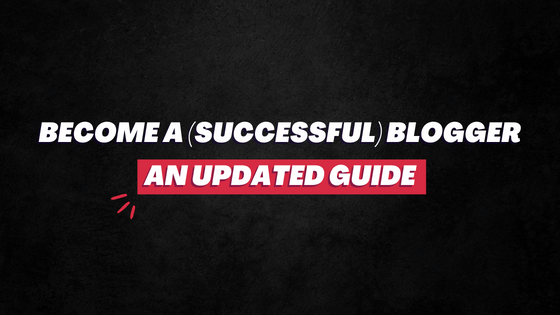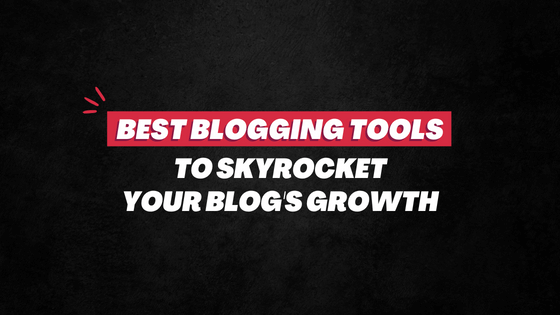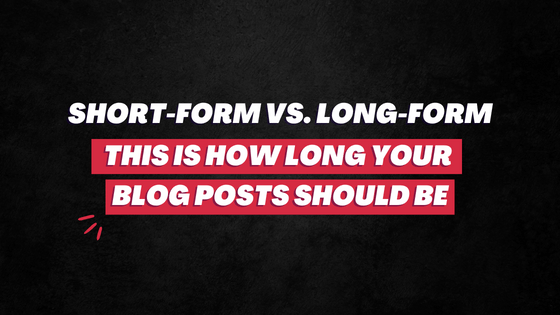You’re about read some very ACTIONABLE and practical (and controversial) blogging tips for beginners and the pros that will change the course of your blogging career.
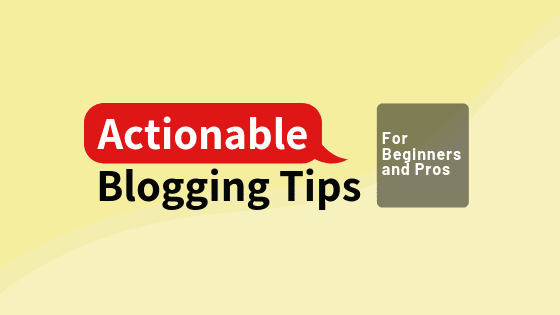
In this post, you will learn:
- How to write fast and better.
- How to increase blog traffic.
- How to make money from your blog.
- How to become a successful blogger.
Let’s jump right in!
1. Do Not Wait Until You Have Learned Everything
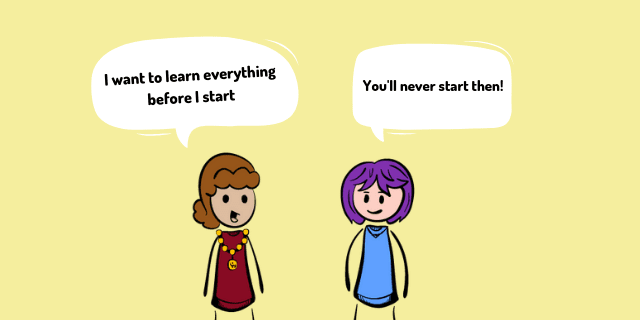
Because you will never get there where you will know everything about running a blog successfully.
This is called analysis paralysis.
When you analyze a thing so much just to reach that “perfect” benchmark you have set, it becomes a cause of your paralysis, preventing you from taking action.
Blogging is a long-term game. It’s an ongoing process.
You learn BETTER from your wins and mistakes – and not by reading countless articles and pondering on them.
2. Start A Blog. (Just. Do. It.)
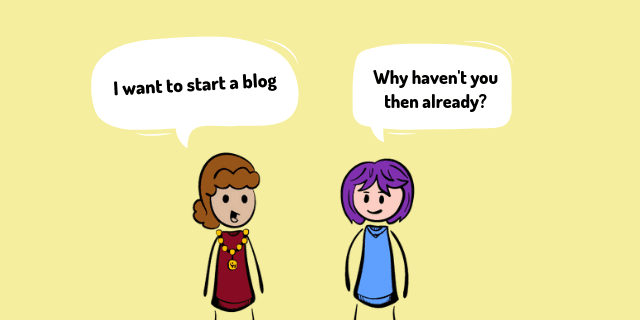
Do you realize millions of people want to launch a blog? BUT, in reality, most of them never do that.
It’s the same old excuse…
- I don’t know how to do that.
- I don’t have the time.
- I will do it next week.
One of the most practical tips on blogging you will ever get is: JUST START.
Get rid of all your excuses and just start.
3. Find The Right Blogging Niche
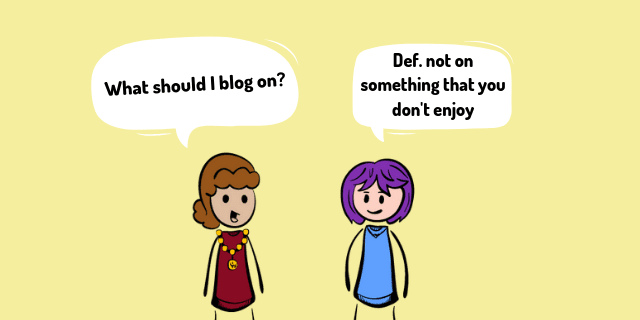
As simple as this may sound, it’s actually one of the most confusing things for many.
You want to have a blog on a topic that you genuinely take interest in and are passionate about.
If not, you will eventually get tired of it. And you will quit if you see no quick result.
In the same breath, you would also want to pick a blogging niche that has enough opportunities to make money.
This makes the task to pick a blogging niche quite confusing.
Health, finance, personal development, self-help, fiction, movies, music, food, technology, fashion… There are many profitable blogging topics.
Take your time, think and then pick wisely.
Recommended Read: How to Find The Best Blogging Topics That Make Money?
4. Create A Buyer Persona For The Blog
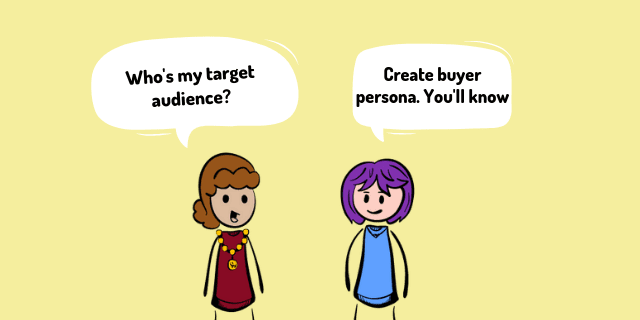
Who’s your target audience? What do they like?
What are their pain points?
What kind of solutions are they looking for?
What kind of products do they purchase?
How they interact online?
These questions are important. The answers will reveal you all the insights about your target audience.
A buyer persona is a fictional representation of your ideal audience. It helps you understand your audience better and up-and-close.
And the more you know about your audience, the more efficient will be your decisions, in terms of what you write on, how you monetize your blog, which social platform do you prioritize the most, and so forth.
So, create a buyer persona for your blog.
HubSpot has a very cool Buyer Persona Creator. Check it out.
5. Identify Your Close Competitors – Take Inspiration From Them

Your competitors are your biggest source of learning.
So, first, find who your close and successful competitors are. And then run down some analysis on their URL.
Spyfu is one of the best competitive analysis tools out there. (Click here to visit) Enter your URL and it will spit a list of all your competitors.
Go through those URLs – at least the top ones – personally. Check their blog design, kind of content they have produced, their social media presence and more.
Next, use SEMrush and Ubersuggest to get more insights about your competitors, like the keywords they rank for, their most popular posts and more.
Once you know about your competitors and what they are up to, do the same thing they are doing – only do it better!
6. Map A Short And Long-Term Plan
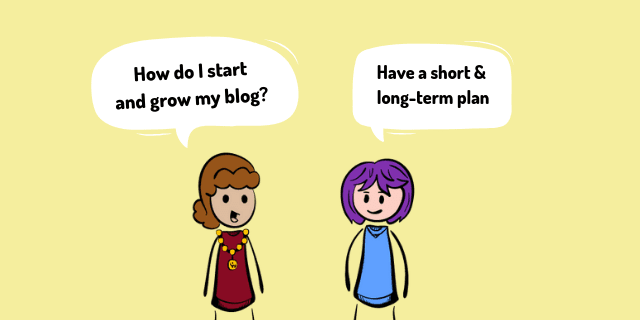
Devise a short and long-term plan for your blog.
How much organic traffic would you want in 2 months and 2 years from now?
How many followers are you aiming to get on Twitter in 2 months and 2 years?
Think about all the various aspects – right from content to keywords to monetary return.
Of course, be realistic in the plan. And do not micro-manage things. Leave enough room so you can be flexible.
The right plan will navigate your blog in the right direction, helping you systematically progress as a blogger.
7. Learn A Few Things About SEO
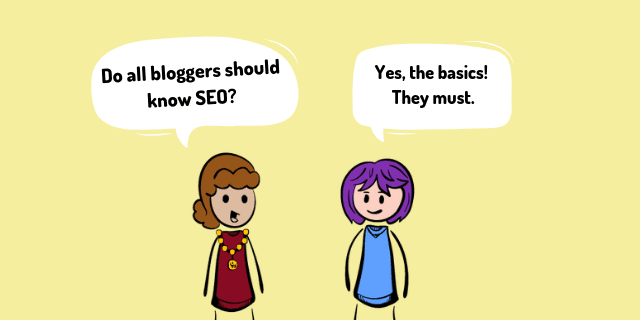
No matter which blogging niche you have picked, this is essential.
Having basic knowledge about Search Engine Optimization will take you a long way.
You would be able to optimize your blog and content efficiently, which will help you drive organic traffic rather easily.
Fortunately, the basics of SEO isn’t difficult. It’s quite simple. Using the right resources online, you can learn SEO right at your home for free.
Recommended Read:
8. Know How To Do Keywords Research The Right Way
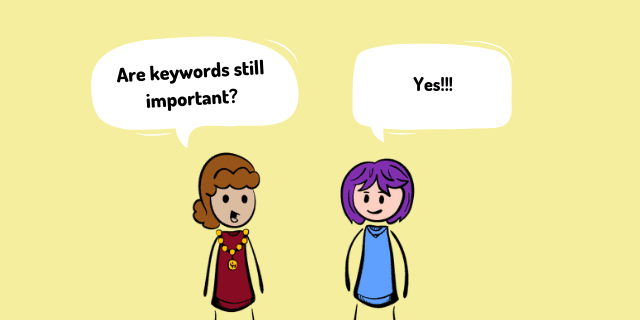
Do not listen to people debating if keywords are “still important”.
Yes, they are. And if your article isn’t properly optimized with targeted keywords, it’s going to have a hard time ranking higher on search results.
Now, do not create content around keywords – a practice that was very prevalent among agencies only a couple of years back.
Semantic SEO is a new part of the conversations today, which is nothing but creating content around topics.
Write, and then optimize the copy with primary, secondary and LSI keywords.
Make sure the keywords fit the context and sentences naturally, and NOT awkwardly.
Recommended Read:
9. Get A Good, User-Friendly Blog Design

- 38 percent of visitors will stop engaging with a website if the content or layout is unattractive.
- 48 percent of people say that website design is the #1 factor in determining the credibility of a business.
There are countless other such statistics that underline the importance of having a good website design.
Where and how you serve your content is equally important.
So, get a beautiful blog design. Make sure it’s optimized for search engines. And, more importantly, make sure it’s optimized for the better user experience.
10. Create An Editorial Calendar
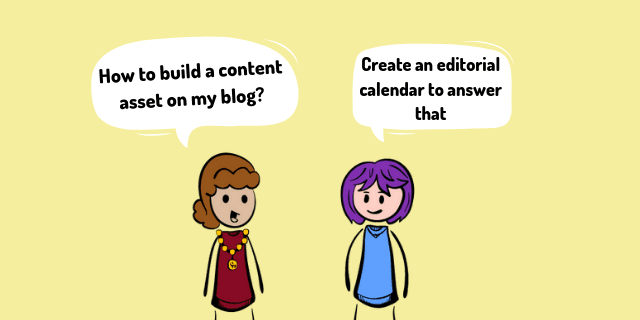
Editorial calendar is a key part of an effective content marketing strategy.
For bloggers, it’s more like a plan of how to build a content asset over the next few months.
It includes a list of topics that you will create content around in the coming days.
In addition, the editorial calendar also packs plenty of other information. Like the date you will publish the content on, on what platform will you publish it, who you will target, the purpose of the content, where you will promote it, and more.
Here’s how HubSpot defines it:
Of course, it doesn’t have to be very “visual”. You don’t have to download editorial calendar templates.
A basic setup on the excel sheet is more than enough.
Recommended Read: How to Create an Editorial Calendar? (A Quick Step-by-Step Process)
11. Write On Things That Your Audience Wants To Read
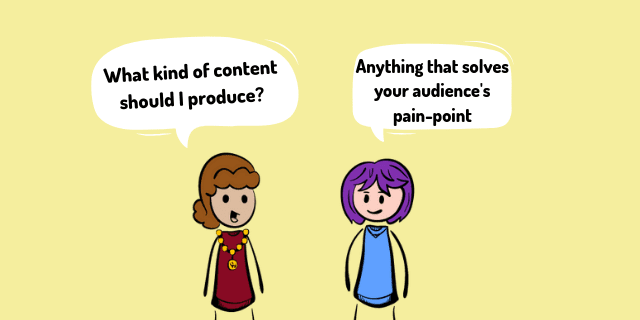
This is one of the biggest blogging mistakes.
Many times, there’s a big difference between what you want to say and what your audience wants to hear.
If you want to make money from blogging and build a brand, you’ve got to say what your target audience wants to hear. (At least in the initial stages!)
Don’t get romanticize with what you want your audience to want.
Focus on them. Focus on their problems. Focus on their preference and convenience.
It is basic demand-supply. Don’t supply what isn’t demanded.
12. Publish Highly-Valuable, Pillar Content
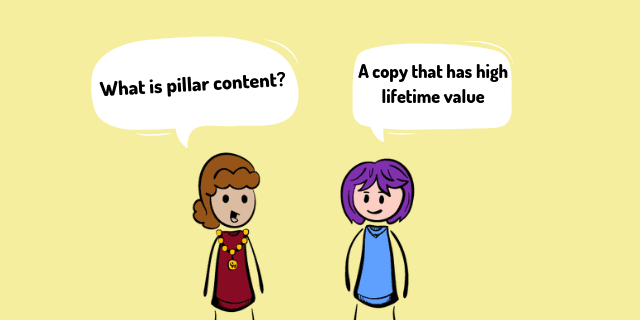
Pillar content is evergreen content that would remain relevant even months and years from now.
- NOT A PILLAR CONTENT: Global Warming Causing Heatwave in Alaska This Season
- PILLAR CONTENT: 5 Signs That Global Warming Is (Very) Real
The first one would get outdated in only a few weeks, if not days.
The second one would remain relevant and “fresh” even a year from now.
As a blogger, unless you’re in a niche where it demands time-centric content (like current affairs), you should create pillar content.
WHY? HOW?
I’ve covered it in detail; check out: What is Pillar Content (And How It Can Increase Your Traffic)
13. Ensure Your Content Is Engaging
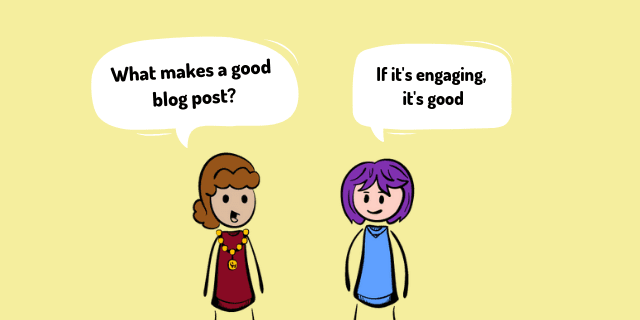
Just like this article that you’re reading right now.
It sounds engaging, does it not?
Imagine if I wrote this in a very formal tone – just preaching without that approach of two-way communication – would you have found it interesting enough to read this full?
Likely not!
Blogging is about having a one-on-one conversation with your readers.
They must feel like you’re talking to them. They must feel “this content is written just for me”.
If your audience is engaged, they will listen to what you’re saying, trust you and act accordingly.
This would help your SEO (increase session duration, decrease bounce rate). And, most importantly, it would help your branding.
Recommended Read: How to Make Your Content More Engaging? (15 Practical Tips)
14. Is Your Content SEO-Friendly?
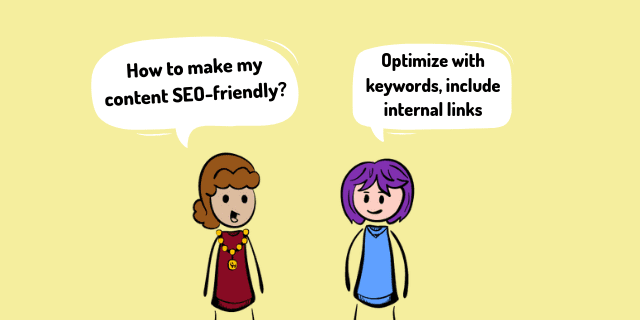
Make sure your content is SEO-friendly.
As mentioned in #8, include relevant and highly targeted keywords in the content.
Link your other internal URLs within the content wherever it makes sense with the right anchor text.
Do not sigh away from linking others’ websites, wherever needed, with DoFollow link.
Split your articles into different sections through the right header tags.
There’s plenty you can do to make search engines love your content even more.
Recommended Read: How To Make Your Blog Post SEO-Friendly?
15. Spend More Time In Writing Headlines
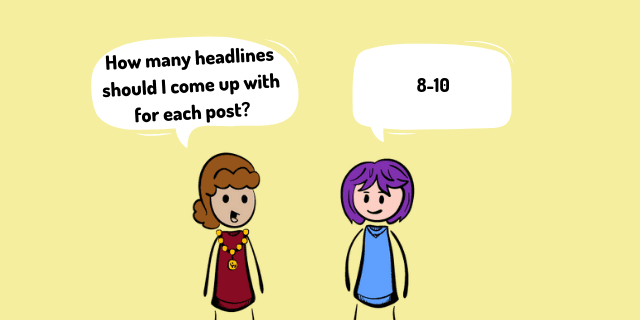
Here comes a very common stat…
8 out of 10 people will read your headline and only 2 people will go on to finish the article.
It’s no secret just how important it is to write attention-grabbing headlines that tempt people to click on.
When you Google something, you will click on any one result for either of the two reasons: one, you recognized that brand; two, you liked that headline.
So, spend a sufficient amount of time in writing engaging and promising blog headlines.
Recommended Read: 9 Best Practices For Bloggers to Write Clickable Headlines
16. Produce (Quality) Content In Large Volume
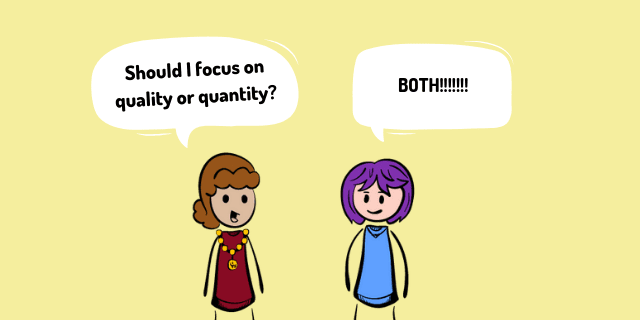
How many times have you read – quality is more important than quantity?
NOT TRUE ANYMORE IN 2020.
The quality of the content is very important. However, today, quantity is just as important, if not more.
You must produce high-quality content in large volume.
It’s essential so to beat your (countless) competitors, to keep your audience engaged all the time, to have the maximum attention of people that you can easily use to convert.
So, create and produce as much unique, quality content as you can – for your blog, social media, and various other relevant content platforms like Medium and LinkedIn’s Pulse.
17. Avoid Picking Copyright Images From Google
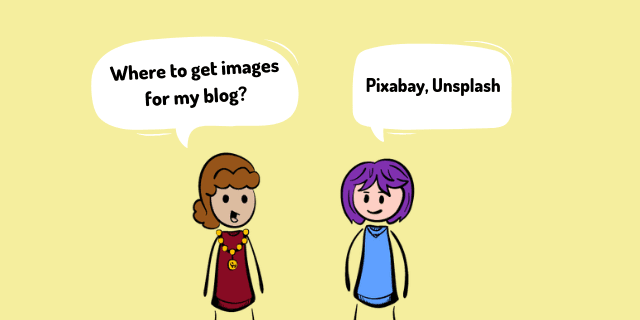
You pick an image from Google and use it on your blog.
It might not look like a big deal. And honestly, nobody would care.
However, if things do go South, or if your blog becomes big, and the owner of the image objects you using her/his property – it’s an unnecessary expense and even legal battle waiting for you.
Even when you have given the proper credit to the owner of the image, you can still be reprimanded to pay settlement money or risk getting sued.
Getty Images, one of the leading premium stock-photo websites, is famous for doing this.
They find people who use their images unlicensed. They then send notice of settlement which can be anywhere around $1000. If you don’t cough that amount, they then send threating letters to sue you, which would cost even bigger.
Read more on this here, here and here.
In short, avoid using copyright images. Remember, better to be safe than sorry.
Use images with the appropriate Creative Commons license. Platforms like Pixabay and Unsplash are great for free images.
You can also use this Creative Commons search engine to find copyright-free images.
18. Get On All Major Social Media Platforms

Don’t be on one platform and expect your target audience to come there. Instead, get on platforms where your target audience is.
Eliminate any friction between you and them.
Be on all the major and relevant social media sites.
See your top competitors and where they spend most of their time and energy. Do the same.
19. Engage With People on Social Media
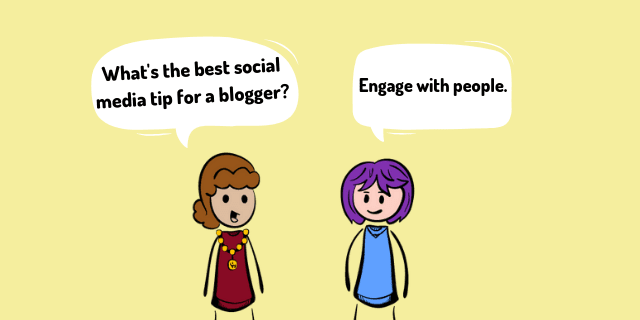
There are two ways to go about with content: create it and engage with it.
You’re already creating content for your blog and social media. To maximize the return of your efforts, you must also engage with content.
So, respond to people leaving comments on your posts. Join relevant conversations using the right hashtags.
Engage people in meaningful discussions.
Not only do you build your brand value this way, but you also open yourself to learn many new things, including market insights and your audience’s needs.
20. Start Guest Blogging On Authority Websites
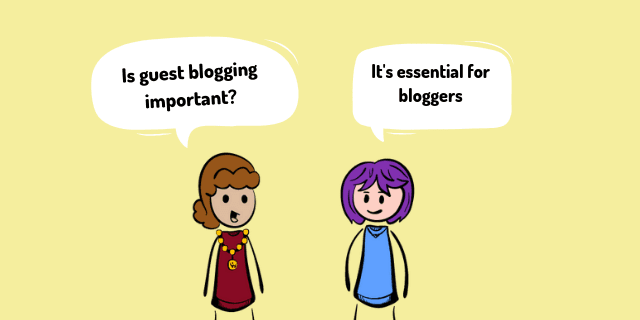
The benefits of guest blogging are big.
Of course, the foremost one is that you would get backlinks, which would help your SEO.
However, one highly underrated benefit of guest blogging is brand exposure.
When you write for a high-authority, relevant website, you expose your brand name to a large and targeted audience.
So, have a guest blogging strategy.
Pick some good, high authority names in your niche that accept guest posts. And then write for them.
Write for as many relevant websites as you can. It would open you the door of many (unplanned and unexpected) opportunities.
21. Start Building An Email List From Day 1
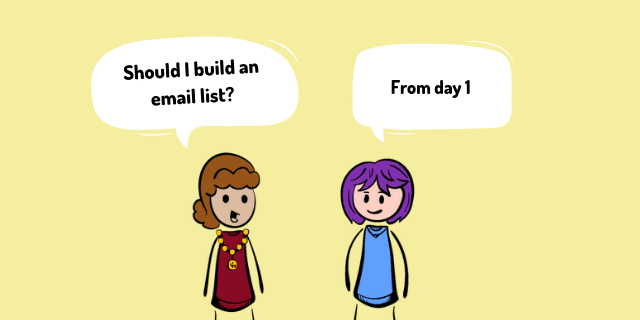
This is the most important part if you really want to create a sustainable business out of your blog.
Sure, the open rate and CTR has declined over the years. However, emails remain the most effective and personalized form of communication.
Unlike your social media likes/followers, you enjoy the full control of your email list.
You hold the key to your target audience’s attention which you can use anytime per your needs and requirements.
Besides, your blog sales funnel would essentially require people’s email addresses. (I have discussed this in the latter part of this post.)
This is why you should make efforts to get more blog subscribers from day one.
It is one of the most important things bloggers should do if they are in this game for the long-term.
22. Have An Opt-In Form At The Bottom Of Your Every Post
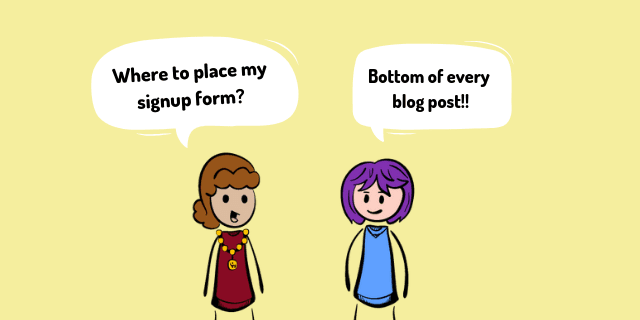
Strategically placing your signup form on the landing page can maximize the conversion.
Now, which is the perfect place to position your opt-in form? Depending on various factors, it would vary.
- The foremost thing to consider is the design of your blog.
- Second, how that form would affect UX.
- And third, is it visible enough to catch attention?
A hello bar at the top is a popular option. Signup form in the sidebar is another option bloggers go for.
From my personal experience, and per many others’ opinions, a subscription box at the bottom of your blog posts is a great choice.
Visitors have just completed consuming your content. If they really liked and enjoyed it, they are more likely to give you their email address.
You can have multiple opt-in forms on the landing page.
As a must, have one at the bottom of your blog posts. It has done wonders for this blog Spell Out Marketing. And there’s a good chance it would do the same for you.
23. Keep Your Email List Engaged
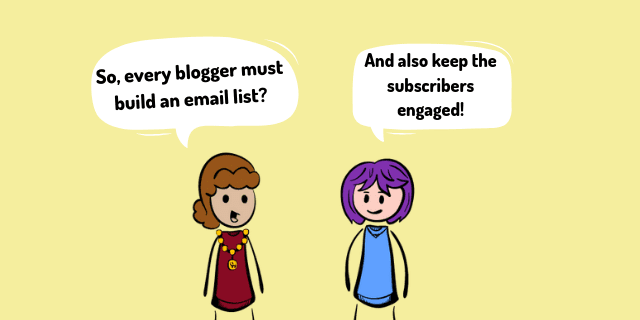
Just building an email list isn’t sufficient.
Email open rate and CTR is low already.
And if you’re not keeping your subscribers engaged all the time (and if you don’t remind them that they have subscribed for your emails), your email campaign would have a poor return. Period.
In fact, sending emails once in a blue moon (even when it’s something good) would lead many people to unsubscribe.
Have a definite email strategy. Using automated tools like MailChimp or Ontraport, run drip campaigns with clear objectives.
Push to them relevant and valuable emails on a regular basis. (Don’t spam though.)
The number of emails in your list doesn’t matter if your engagement and conversion are poor.
24. Have A “Lead Magnet” To Get Emails Easily
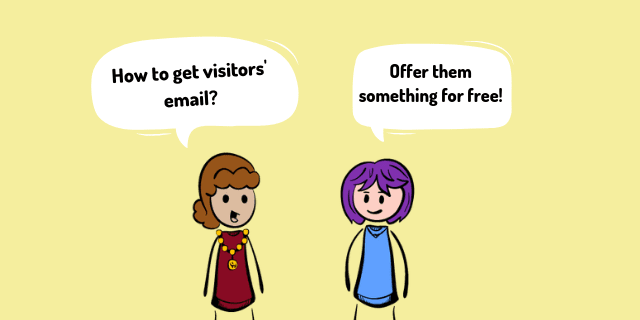
The visitors won’t give you their email address just because you’re asking them nicely.
People’s inbox is so crowded (and unread) today that most of them are reluctant to give someone their email address unless they are getting a good value proposition.
This is where a lead magnet comes in. It is a free item or service that you give away to the visitors for their emails (or phone number).
It’s a part of Top of the Funnel (TOFU) strategy that helps bloggers build an email list.
Now, what should be your lead magnet?
It depends on the niche you’re in, the audience you target, the types of content you produce, business objectives and various other factors.
Generally, an eBook is a very popular option for bloggers.
Other lead magnet ideas include email courses, content extension (“To read this full article, give your email”), spreadsheet, reports, consultation, videos, case study, discount coupons and more.
Consider your marketing and monetization strategy and then pick your lead magnet thoughtfully. (You can have multiple lead magnets depending on your sales funnel.)
Recommended Read:
25. Optimize Your Homepage’s Above The Fold
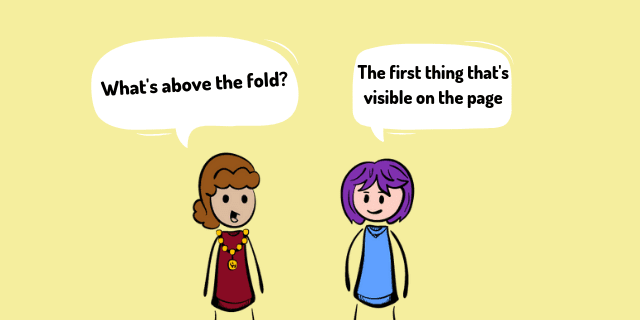
The homepage would be the most visited page on your blog. It’s the most important one.
While you should be careful of how the entire homepage looks, you should be more perceptive of its above the fold portion.
Above the fold is the content/portion that first appears on the browser when you land on a page.
Since it is the first thing that’s visible to the visitors, it can play a difference-maker in grabbing their attention and creating a perception about your blog.
So, ensure your above the fold is meaningful and attractive enough to catch visitors’ attention and provide them (and to you) a relevant value.
I published an in-depth article on the subject: 16 Best Practices For Above The Fold Content Optimization. Do give it a read.
26. Update And Republish Old Content
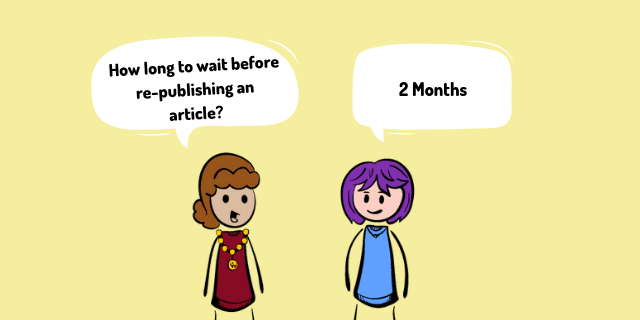
This is a highly underrated content marketing strategy.
Instead of focusing all your energy in producing newer content, make sure you’re also getting the most return from your existing one.
Your old content that has become stale or outdated (or they didn’t deliver you the expected rewards) – republish them.
Make appropriate changes. Like, change the title, images, and targeted keywords.
Update the information wherever needed.
And then republish them with a new date.
Although a very small step, this can make a big difference in your blog’s search ranking, CTR and engagement rate.
Recommended Read: Revamp, Repurpose Your Old Content To Boost SEO
27. Do Not Accept Guest Posts
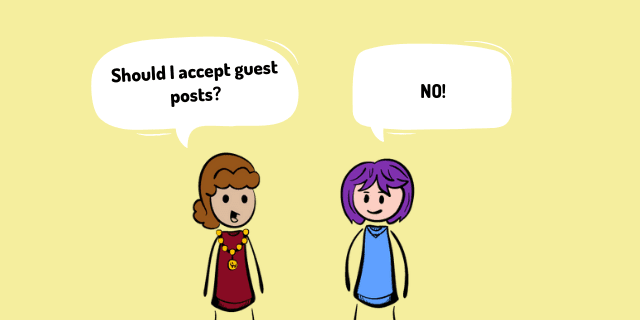
Sure, having more content on your blog is a good thing.
However, when accepting the guest posts, the biggest concern that comes is the quality of the content.
Majority of the people that wants to guest post on other websites do that for the sole purpose of backlinks.
So, the quality of their content is usually mediocre at best.
There are countless examples out there where the owner of the blog, just for the sake to have more content, has virtually destroyed the quality of the blog by accepting guest posts from just about anyone.
For this simple reason, it’s best you avoid accepting guest bloggers.
In addition, when you’re trying to build a personal brand, you want to put forth your ideas and hot takes – and NOT others’.
Moreover, a large part of your community would want to hear from you and not the other bloggers.
So, it’s the best idea to produce all the content on your blog yourself.
Recommended Read: Here’s Why You Should Not Accept Guest Posts On Your Blog
28. Make Sure Your Blog’s Loading Speed Is Fast
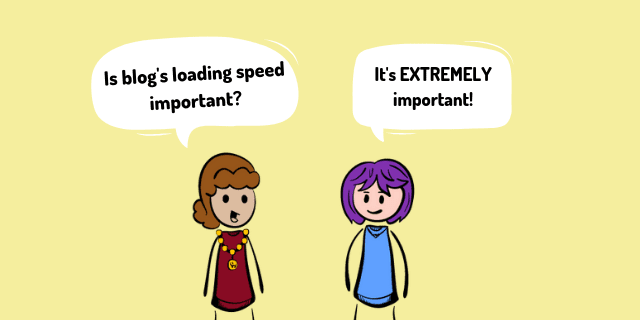
There are countless numbers that underline just how important it is to have a fast loading website. Here are some:
- 64 percent of smartphone users expect pages to load in less than 4 seconds. (However, on average, a mobile landing page takes 15.3 seconds to load.)
- A 100-millisecond delay in page load time can cause conversion rates to drop by 7 percent.
- A 100-millisecond delay in page load time can cause page views to drop by 11 percent.
(Source)

It’s essential that your blog loads fast. Under 3 seconds is desirable. Anything more than 5 seconds is unacceptable and you must work to speed it up.
The faster the better for your SEO and UX.
This is why you must be careful about picking the right blog theme and adding the right blog features.
Recommended Read: Website in SEO – Does Your Site Load In 2 Seconds?
29. Know How To NOT Waste Your Time
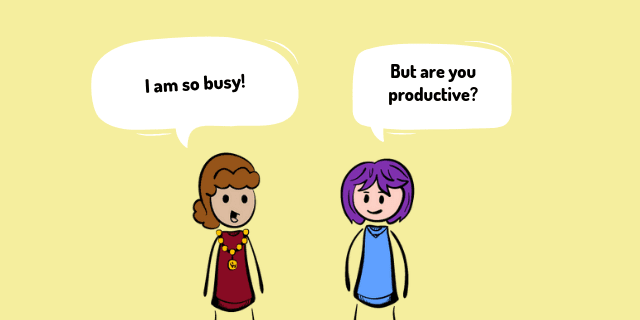
As a blogger, you have to take care of SOOOOOO many things: FROM publishing content TO posting on social media TO engaging with your community.
It all can get quite overwhelming.
So, time management isn’t a luxury – it’s essential if you want to be efficient and at the top of your game.
Audit your day every other week.
Are you optimally productive? Is there any room to be more efficient? Are you sure you’re not wasting your precious time on irrelevant things?
Answer these questions.
So, learn to be more productive to achieve more.
Recommended Read:
30. Use the right blogging tools
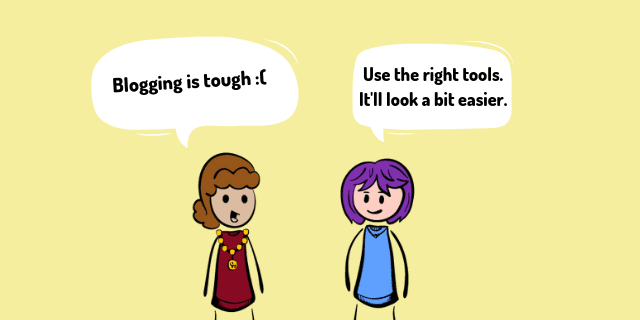
There are some tools that will make your life so much easier as a blogger.
They would help you write fast, edit better. They would automate your social media posting and emails.
They will make researching and collaboration convenient.
So, leverage on such good blogging tools per your need, requirement, and budget.
Here’s a list of 43+ Best Blogging Tools (2020 Updated) I published a while back. Check it out.
31. Avoid Spending Big Money On Anything At The Beginning
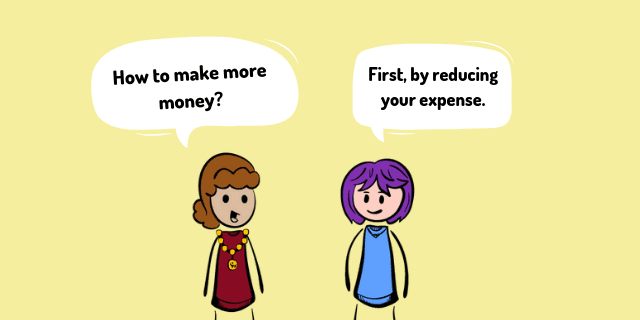
If you have the money, sure you can. If not, cut back on all the possible expenses.
You don’t need an advanced web hosting plan in the beginning. As your blog grows, you can make your upgrades.
You don’t need to buy a premium theme. The free ones are good to begin with.
Do not spend big on email marketing solution in the early days. The likes of Mailchimp that offer a basic plan for free are sufficient to get you going.
You don’t need expensive blogging tools.
When you have launched a new blog, you should make proactive efforts to reduce your expenses.
32. Decide: Personal Brand Vs. Blog’s Brand
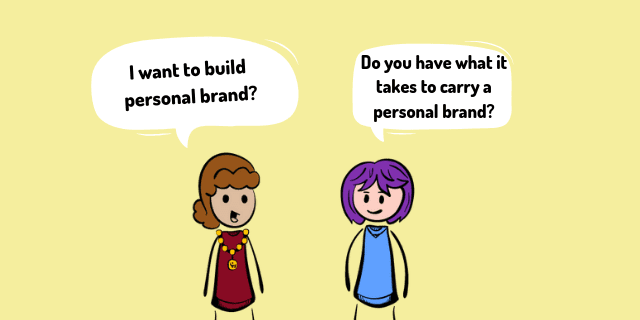
This is an important decision. And there’s no straightforward answer as to which one should you choose.
Do you want to primarily build your own personal brand?
Or do you want to build the brand of your blog?
A very good example of a blogger with personal brand is Yaro Starak. He invests in his name. His entire business is based around his face and name.
When it comes to the brand of a blog, Shout Me Loud of Harsh Agarwal is a prominent name. Not that people don’t know who Harsh is. It’s just that he pushes the brand of SML more. His business is based on the blog’s name and not on his own.
Of course, you can do both. You can build the brand of your blog – and you can build your own personal brand.
Darren Rowse is a good example of this. His blog ‘ProBlogger is one of the world’s most known. But people also know, recognize and trust Darren.
In a way, your own personal name and the blog’s name are often interlinked – and can be branded together.
But still, you’ve got to pick which one would be the dominant one and then create your blogging strategy around that.
Personal brand or blog’s brand – there are different factors that you need to consider when deciding:
- Are you comfortable being in the spotlight?
- What’s the growth plan of your blog? Do you plan to hire in-house people and grow it into a company? OR do you want it to be a one-man thing?
- Do you have the subject knowledge and personality to carry a personal brand?
There are many questions to consider. So, take your time and think thoroughly.
33. Pay Attention To Internal Link Building
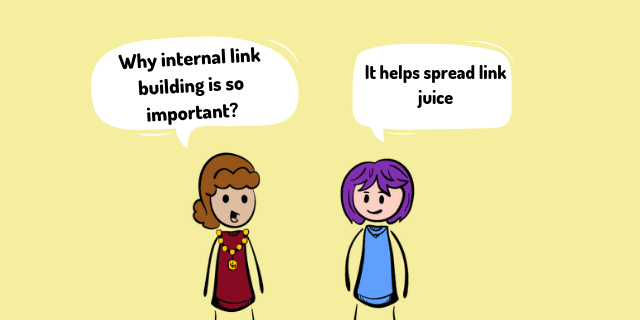
Internal link building is one of the key on-page SEO techniques.
Not only does it help you spread the link juice and make crawling easier for the search bots, but it also provides easy navigation for the readers.
They can click on the links and jump to the different sections of your blog.
They will stay engaged with your content and get more value throughout their session.
This will collectively improve visitors’ experience, which will then further boost your SEO.
So, link different pages and articles on your blog with each other wherever it’s relevant and make sense.
Use keyword-rich anchor text. Have ‘Recommended Read’ options.
34. Avoid Writing Long Article Unnecessarily
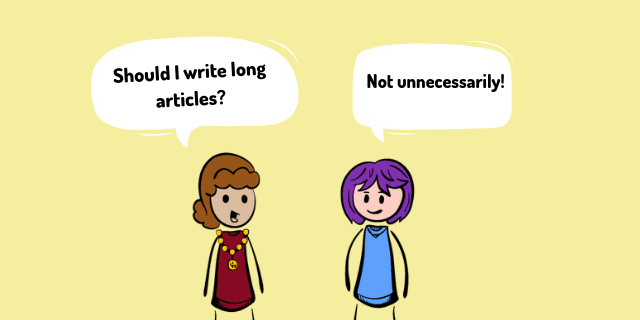
There now exists this narrative that in order to rank higher on Google and Bing, you must produce long-form content of around 2,000 words.
There’s a lot wrong with that idea.
I recommend you read…
Point is: Do not unnecessarily increase the length of the article in the name of “SEO”.
For that matter, do not even look at the words count.
Say whatever you have to say, in however many words you can say that in. Whether it’s 200 or 12,000 words.
Respect readers’ time and intellect. Provide them the most value without obsessing the words count.
35. Do Not Monetize Blog Right From The Go
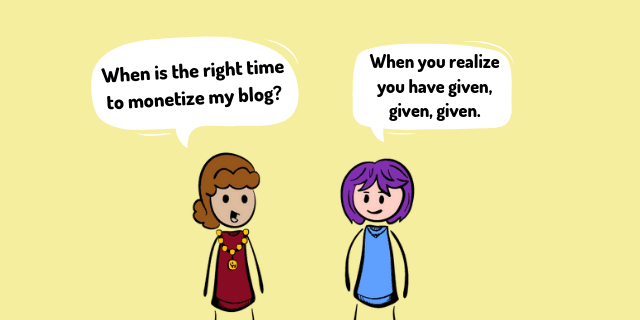
Imagine this: You land on a blog and all you see is articles promoting affiliate products and courses.
What will be the first thought in your mind?
“Ah, they are just trying to sell things to me!”
And this perception will likely negatively affect the brand image in your subconscious.
Of course, that is not good for that brand/blog.
Sadly, this is what many bloggers are doing. They are shelling promotional content from day #1.
Now, pushing affiliate products isn’t bad. BUT how do you expect people to convert…
- if they don’t know you?
- if they don’t trust you?
- if you haven’t brought them any substantial value?
Foremost, you need to build an audience base. You need a group of dedicated readers with high Lifetime Value (LTV).
You need to bring value to all. You need to win over your visitors by providing them the best possible solution.
And unnecessarily pushing them to buy products or click somewhere is NOT the right way to do that.
So, trying to monetize your blog from day #1 is a bad strategy. Don’t do that.
36. Have A Proper Strategy On How You Will Monetize Your Blog
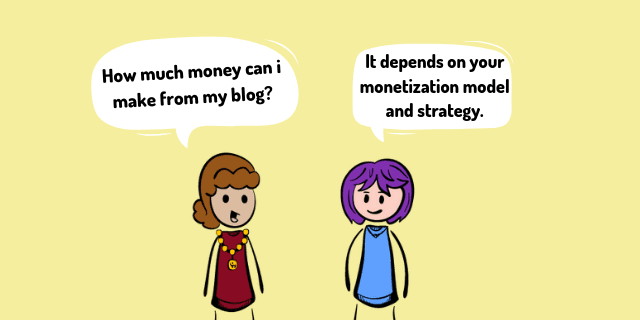
Don’t assume that you will figure it out as you go about on your blogging journey.
Have a proper monetization plan right from the go.
Of course, you don’t have to pin-point every little detail about how to make money from your blog. All you need is a basic idea and framework.
This is essential to provide yourself an assurance that whatever you’re blogging on, it has enough prospects to make you the desired amount.
You don’t want to spend months and years into it only to realize later that there’s very little opportunity to make enough money.
37. AdSense/PPC Is A Bad Way To Make Money From Blog
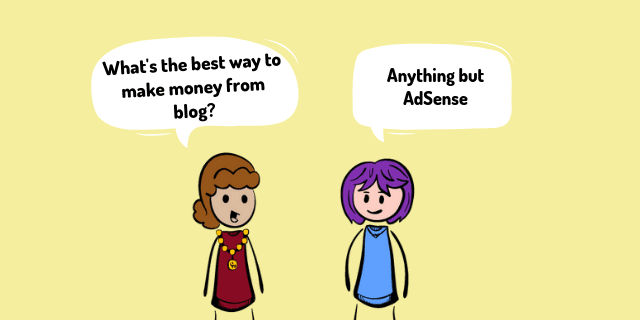
Yes, today, in 2020, Google AdSense is a very bad way to make money from your blog.
They pay in peanuts for every click.
Meaning, unless you’re getting thousands of visitors every day, your blogging income would be very low.
And getting “thousands of visitors” daily is a tough task even for the big names in the industry – let alone the beginners.
Moreover, even if you’re getting good traffic, how many of these people would really click on these ads? (When was the last time you clicked on any such ad?)
Exactly!
In addition, putting up flashy ads on blogs doesn’t look too good for the brand. (Or maybe this is just my opinion!)
There’s a reason, after all, why almost every top blogger has done away from Google AdSense as their source of income.
So, keep it as an option – but do not expect to make a lot of money from AdSense.
38. Have Multiple Sources Of Income
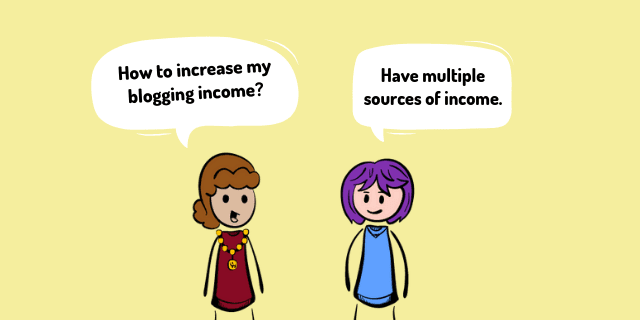
Affiliate marketing is likely one of the best sources of income for bloggers. But you shouldn’t solely depend on it – or any other one source for that matter.
What if your highest paying advertiser closes its affiliate program?
What if the kind of product you’re selling sees a decline in demand in the market?
What if the CPC/CPM of the ads on your blog declines?
If you’re relying on only one source of income, you’re leaving yourself in a very vulnerable position. You can have the flow of your income hit any day.
It is, in fact, one of the most important financial tips EVER: have multiple sources of income.
And this is true for all the bloggers. They should look to generate more revenue through different sources of their web properties.
For example, you can start a new business and make money there easily – because you would be carrying, to this business, the attention of people who know and trust your personal brand.
Recommended Read: 21 Ways To Make Money From Your Blog in 2020
39. Build A Sales Funnel
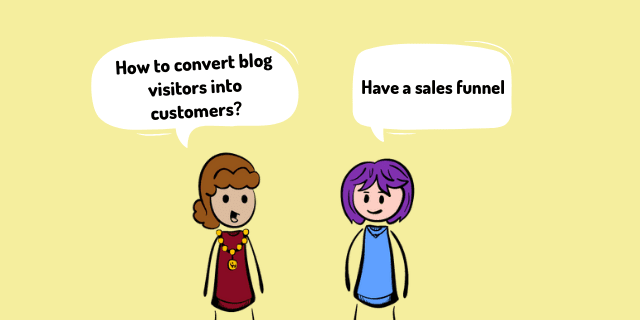
A sales funnel is a goal-centric marketing system that allows businesses to keep a tab of the phases that a prospect goes through until conversion.
Sales funnel helps devise a better marketing strategy.
Broadly, it’s divided into three levels: Top, Middle, and Bottom.
Each of these levels has its respective phases: Awareness, discovery, evaluation, intent, purchase, and loyalty.
(Note: Sales funnel is different from the customer journey. The latter is a collective experience of a customer when interacting with your brand and all the touchpoints.)
Here’s a nice video by Grumomedia explaining Sales Funnel:
You need to create a sales funnel for your blog.
How?
It depends on the topic you blog on, the monetization model you have, the kinds of products you have and, of course, who are you targeting.
Usually, your blog posts and social media updates will create awareness and interest.
A free eBook or email course will generate you leads.
Exclusive and helpful content will drive that lead into a prospect, which will eventually convert to being your customer.
The length the sales funnel can be short or very long depending on many factors, including the price.
If you’re selling a $1000 item, you would need time to convince people to spend that much money. So, it would usually have a long funnel and many touchpoints.
But if you’re selling something at $7 – that’s fairly cheap and many people wouldn’t think a lot to spend that much. So, this may not require a long funnel.
Take your time to create a good blog sales funnel. And then create content and communication strategy around that funnel.
40. Do Not Sell Information That’s Available Online For Free
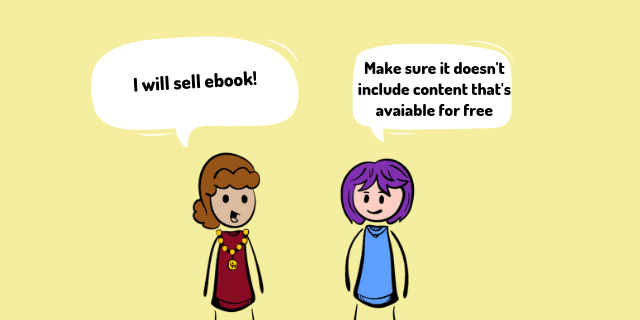
A big mistake bloggers make. What so many of them do is sell eBooks which includes information that’s available online for free.
They sell training courses that has nothing exclusive; that brings no unique value. Instead, it just includes curated, clichéd information that’s readily out there online. FOR FREE.
Sure, you can manage to sell such mediocre information products. However, it would also reduce your brand’s retention value.
Your audience might not trust you. They might recognize you as someone who just wants to sell and make money.
If you’re shoving your blog visitors with prompts to buy eBooks and courses, they will recognize you as a greedy salesman. And they will leave once they have got (or not) what they are looking for.
Stop selling information that people can find for free online.
Recommended Read: Commoditizing Information is a Bad Revenue Model for Bloggers
41. Give As Much For Free As You Can
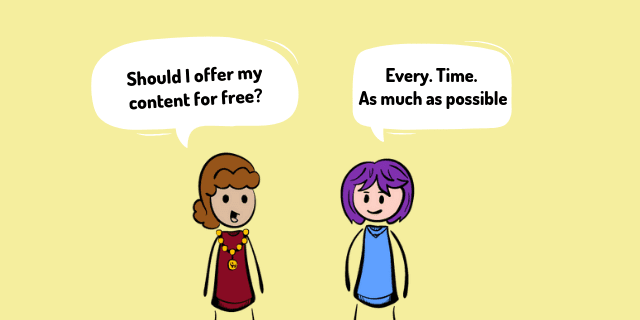
“Only by giving are you able to receive more than you already have.”
Yes, the quote is cliché. But it fits in the business world.
When you give, something funny happens – the universe returns you even greater rewards.
So, right from the front, give as much as you can to the target audience for free. Provide them the most value without charging.
Do not put a price label on the little information that you know and others don’t.
Like Gary Vaynerchuk says, “jab, jab, jab and right hook” – give, give, give and then ask.

Sure, this might not be the most strategic thing for a blogger.
However, when you bring high value to your audience – they observe that. They see you and your good intentions. And this shapes your brand in the right way.
And when your brand is strong, in the long-run, you inevitably find money-making opportunities pouring in from many directions.
Be a giver first. And you will automatically find many people giving it back to you in perpetuity.
42. Re-Invest Money In Your Blog
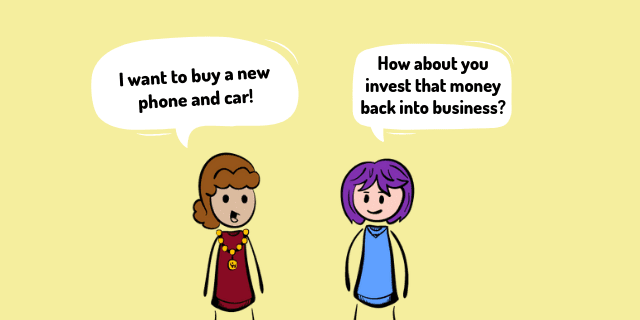
If you want to be a successful blogger, you must treat your blog as a business.
And just like any business, this one too would need investment.
So, when you do start making money, do not get fancy. Do not take all the profit to buy irrelevant and unnecessary stuff.
Instead, re-invest that sum back into the business to scale it to the next level.
Get a better web hosting. Sign up for a better solution provider. Hire an editor and virtual assistant. Invest in social media ads.
Use that money to grow your business.
43. Include Links Of Other Websites In Your Posts
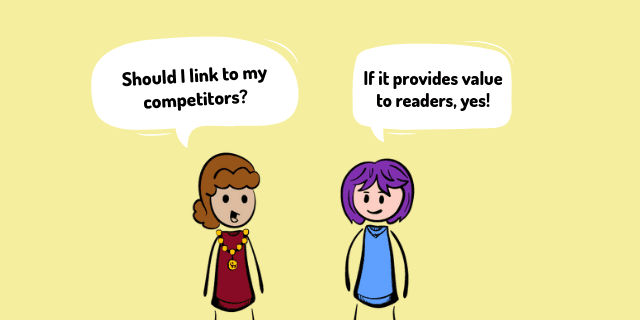
Sure, when you link other websites (and have DoFollow directive), it does spill your link juice.
However, the benefits of outbound links far outweigh that.
They help search engines understand the context of your content.
The kind of websites you link, it gives search engines a fair idea about the kind of website you have.
To know more on this, read: Do Outbound Links Help SEO?
So, link to other high quality, relevant articles and websites whenever and wherever it makes sense… even if it means linking your competitors.
44. Don’t Depend On One Source Of Traffic
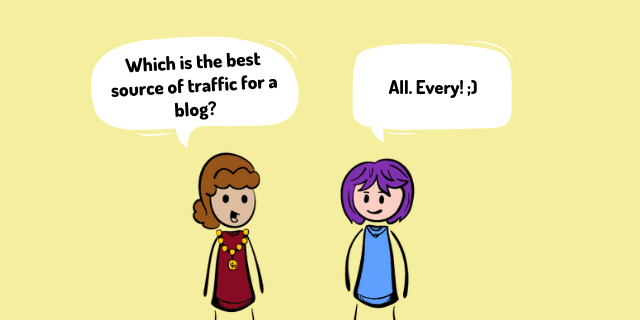
You don’t know when Google decides to change its algorithm and fuck you up.
You don’t know when LinkedIn and Twitter will change their algorithm…
You don’t know when all your emails get trigged as spams and get filtered out from subscribers’ inbox.
Relying on one source of traffic is the greatest blogging mistake you can make.
The web world is dynamic where things change faster. So, you’ve got to play it cautiously.
Milk all the sources of traffic. Leverage on as many of them as possible. So that when one collapses you will have the other sources to save your blog traffic from zeroing.
45. Never (NEVER) Promote Products That You Don’t Believe In
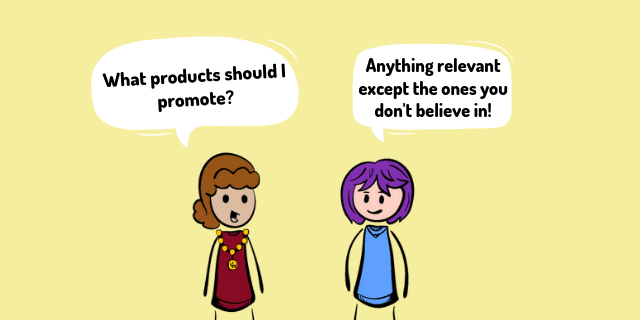
Many bloggers sell affiliate products that they either don’t know about or haven’t used them.
There are many things wrong with that.
- How can you tell your audience to purchase something that you haven’t yourself?
- How do you know about the quality and value of the product if, again, you have never used it before?
Your audience will be able to see-through your affiliate agendas. They would know you’re promoting all the products just for the money – and you DO NOT really care about their needs.
And guess what happens next?
This will hurt your brand. They will stop trusting you.
And, most importantly, you will now lack the structure to build, grow and sustain your blog.
In the short run, promoting affiliate products that you don’t believe in just for the sake of money can bring you decent rewards.
In the long run, you will lose.
46. Do Not Prioritize Conversion – Keep Brand At The Top
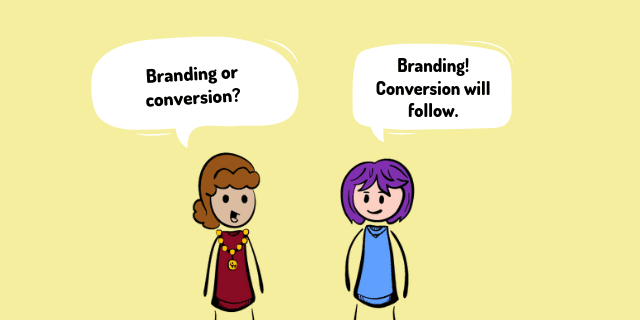
Yes, the conversion is everything if you’re looking to make money online. But then as a blogger, that shouldn’t be your top priority.
Imagine you visit a website and you’re pushed to click on a link, sign up for something or make a purchase – you might not necessarily appreciate this because you don’t even know this website well.
On the other hand, if you visit a website that you know and trust for the value it provides you all the time – you’re more likely to click on its links, signup for something or make a purchase.
That’s the power of branding.
So many bloggers push their visitors to buy something. They are money-centric.
Of course, their efforts do convert. But the conversion is much less than it should. And it isn’t very sustainable. Because they are selling – and not engaging, connecting and helping the visitors.
Remember, you can have the best landing page but if people don’t trust you, they won’t convert.
So, prioritize your brand above the conversion.
Focus on promoting your brand obsessively as someone who wants to help and bring value to others.
Once you have built trust with your audience, your brand will automatically bring you (high) conversion.
DO NOT SELL DIRECTLY. Keep an inbound approach with the focus on your brand image.
Branding > Sales is the golden rule to succeed and sustain.
47. Spend Time In Analytics
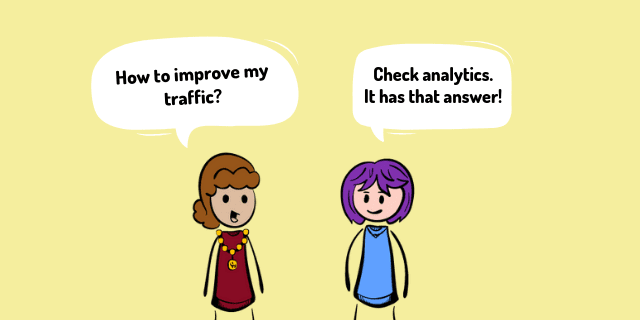
You must always be in the know how your blog is performing and growing (or declining).
It helps you have the right perspective and realistic goals, which would help you create and execute the right strategies.
So, whatever analytics tool you’re using, visit and check it every other day.
How many pageviews your blog is getting? What’s the bounce rate? What’s the demography of the visitors? What devices are people using to access your blog? How/from where are they landing on your page?
These are some important numbers you should always know.
That said though, it’s also important that you don’t get too hung with the vanity metrics.
These numbers will surge and decline every day. More so if you’re a beginner.
Unless there’s any massive change in the trend line, do not dwell on them.
48. Automate As Much As You Can
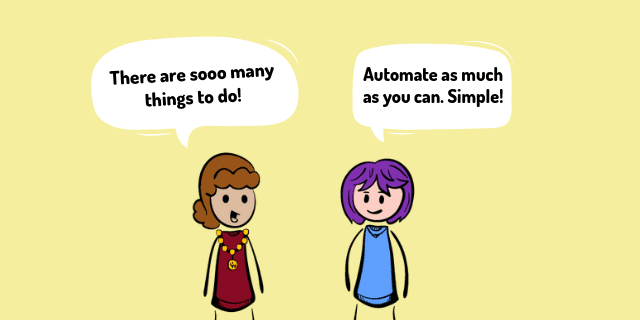
One of the best things about being a blogger in 2020 is that you can automate a lot of things…
FROM your email drip campaign TO social media posts TO the date/time when your next article will get published.
Leverage on the right tools to automate as much as you can.
It’s highly convenient and very efficient.
Moreover, this will leave you with enough time to work on other important things that demand your manual effort/intervention like content creation, email outreaching, responding to comments on social media, devising better conversion strategy, doing research and more.
Depending on your needs, there exist many automation tools. So, choose accordingly.
MailChimp is great for email automation and Hootsuite for social media.
Zapier is another great tool that connects different applications through API and creates automated workflows.
Recommended Read: A Complete Guide of Free Email Automation on Mailchimp
49. Get Rid Of Thin Content As You Go
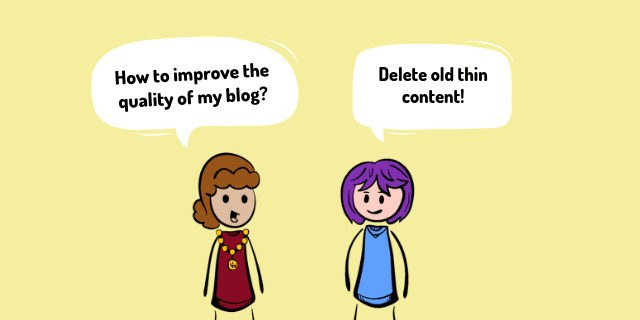
The first article you published on your blog wouldn’t necessarily be as great as your latest ones.
You will find many articles that aren’t very good in quality. They don’t provide as much value as you want them to.
Similarly, you will also find many pieces of old content that might not fit your refined blogging goals, vision, and voice.
It’s important to get rid of such content as you go about creating new ones.
Thin, bad quality content hurts your brand. They diminish the standard of your blog.
And most importantly, they also have a negative effect on your SEO, hurting your organic reach and traffic in the long-run.
So, from time-to-time audit your blog and get rid of poor content.
50. Pay Attention To Mobile UX
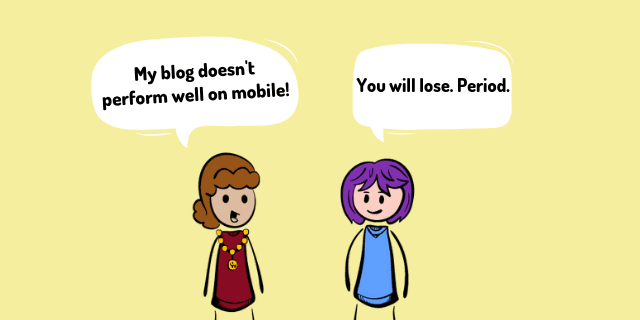
Today, more people access the internet through their phones vs. desktop.
And with how things look at the present, mobile’s share in online traffic is only going to go higher in the coming years. (This is why Google launched mobile-first indexing!)
So, a large part of your attention should go to mobile users.
How people on their handheld devices engage with your blog? Do they get a good browsing experience? Do they spend enough time on the page?
Your analytics can reveal a lot of answers to these questions.
Once you have the right numbers, make appropriate changes to your blog design, content type, and various other aspects.
In short, you want to focus equally, if not more, on mobile users as desktop users.
When on a small screen, people’s needs, expectations, and preferences are different. Understand them and then provide them the best user experience.
51. Come Up With A Relatable Story
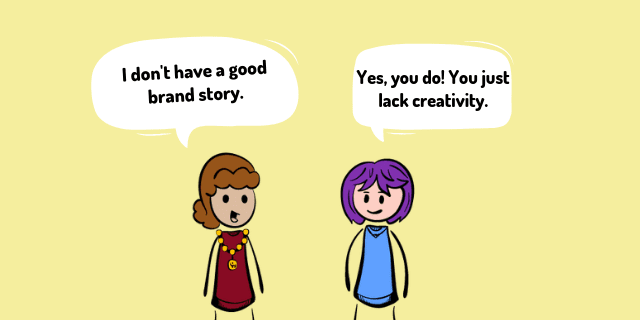
A brand is built on the top of a story.
People might remember your name. But they will connect to you, and trust you, based on your story.
So, what’s the story of your brand? What’s the story behind the existence of your blog?
Why you started this blog on minimalism?
Why do you want to talk about fitness?
What got you into starting a blog on history?
There’s a story. Tell that story to your audience in a creative way. Shape that story in a way that connects with your target audience.
The more people relate to your story, the more they will end up engaging with your content and trusting you.
52. DO NOT LIE
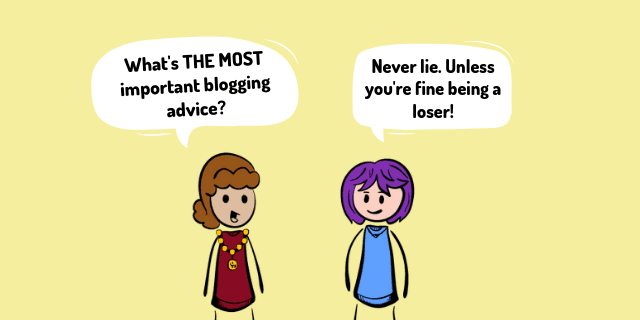
This is extremely basic and most essential.
Refrain from lying.
At a time like today where there’s immense transparency, you never know when your lies can get exposed and destroy your blogging career.
It sucks that so many bloggers put up fake traffic and income reports to look big shots, knowing less that people can actually smell through their lies and BS.
Don’t be one of them.
Stick to your true story.
It’s okay if your blog is getting poor traffic. It’s okay if you don’t have the knowledge of any topic in your industry.
The truth will sell. It always does. People connect to authenticity.
Do not buy into the fake it till you make it culture. Else, in the long run, you will lose.
53. Build Trust With Your Blog Readers
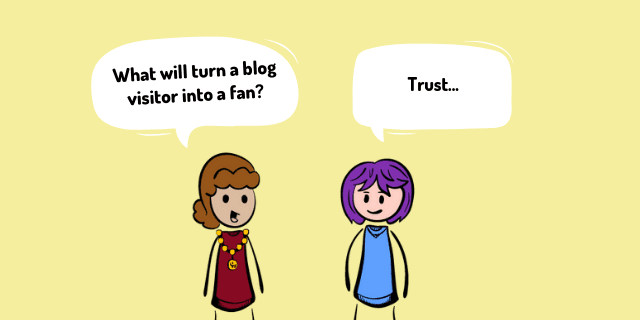
Your blog will NEVER sustain if you do not attempt to win your audience’s trust for their high LTV (Lifetime Value).
After all, only those people will convert and make you money who knows your brand and trusts your value proposition – and NOT the strangers who have landed on your page after a Google search.
So, throughout the journey, you must take several measures to build trust with whoever visits your blog and consume your content.
You must give them good reasons to remember your name.
The foremost thing to do is to publish high-quality content that addresses the problems of the visitors – and provide them the solution.
When you provide people what they are looking for, they might not trust you just yet, but this does improve your retention value.
The next time they see your brand name anywhere, they would recognize it and choose to engage with it over other brand names.
And if you provide them some more value, this can ultimately transcend into a bond of trust between you and your audience.
You can then (carefully) use this trust to achieve your blogging goals – be it to make money, to establish yourself as an authority in your niche, or more.
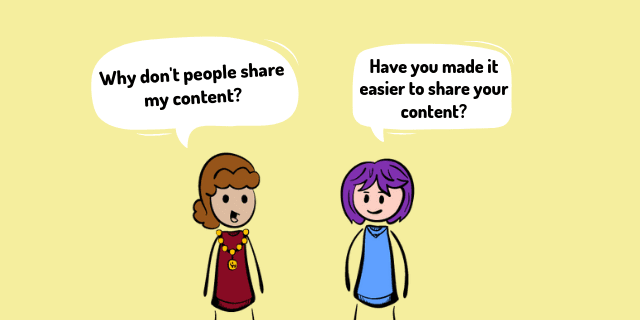
Quite a no-brainer.
Although the number of shares an article gets has seen a decline in recent times, some people still do that.
If you provide them a high return for their time investment – if you provide them the right solution for their problem – they wouldn’t mind sharing your article.
The key is having a killer content that provides high value.
After that, you have to make sure that sharing the content is easy and frictionless in the first place.
Place the sharing buttons prominently on the page (desktop and mobile) that’s visible to all. Sticky buttons are great.
As for positioning/placement, some people believe placing these buttons on the left side (where your sentences start) generate more shares because they win more attention of the readers.
To find your ideal positioning and the number of social media sharing buttons you should have, do A/B testing.
55. Build A Community Of 100 Readers First
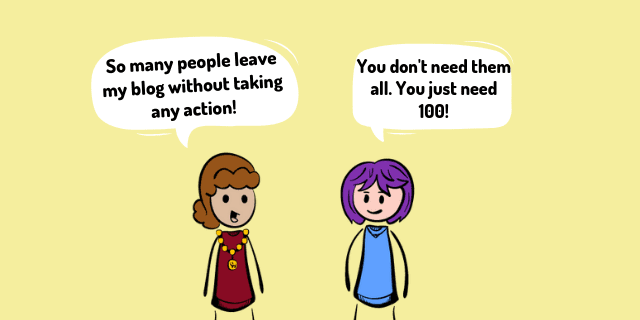
To be a profitable blogger, you don’t need thousands of readers.
Just a hundred core and committed readers are sufficient to get the wheel rolling.
These 100 readers will be your biggest fans and cheerleaders. They will consume all your content and purchase all your products. They will be your brand ambassador, promoting your blog on social channels.
And, most importantly, they will be the biggest reasons why and how your blog will grow.
So, get rid of the mindset that you need to bring thousands of visitors to your blog.
In the beginning, focus just on 100 readers. Provide these readers an immense value that they start trusting you.
This is a much achievable and practical approach. And if you do this correctly, these 100 readers will unlock new opportunities in the long run.
Soon that 100 will turn into 1,000 and 10,000 without much of efforts on your end.
56. Learn To Say “NO” In Your Emails
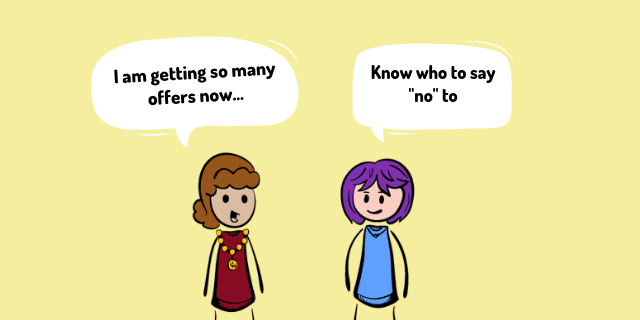
Once your blog starts growing, you will find many outreach emails in your inbox.
Most of them would be of people wanting to write a guest post on your blog. If you do accept guest posts, think thoroughly.
In the name of “more content”, you don’t want to fill your blog with garbage.
And then there will also be emails from individuals and (shady) companies approaching you with the opportunity to make money online.
They would ask you to write a post on their product for the money.
They would ask you to plug their service links in your posts.
They would ask you to put up a banner on your homepage.
Here’s the most important thing you should remember: NEVER PROMOTE A PRODUCT THAT YOU DO NOT BELIEVE IN.
Even if the pay is good, do not promote any unknown, less-trusted product.
It can hurt your brand value. Moreover, such promotions also break the trust of the target audience. And when this happens, you virtually kill the longevity of your blog.
So many bloggers chase money. So, they say ‘yes’ to whatever offers come in their way, knowing less about the negative impact of such decisions.
Do not be one of them.
Learn to say “NO” to such emails. (A lot better opportunities lie ahead!)
57. Play The Game Around Your USP
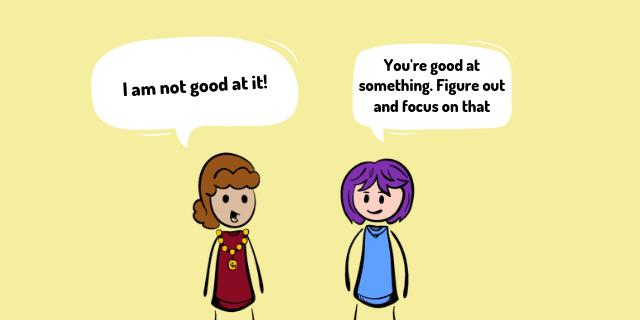
Don’t try to be humorous in your content when you aren’t the funny guy/gal.
Don’t try to sound like an expert when you’re still in the learning phase.
Do not lie that you’re experienced when you’ve been doing this for only 2 years.
Every blogger has a unique voice, style, and proposition.
And their “voice, style and proposition” are usually linked to their authentic story and personality. They do not fake it. And neither should you.
You have something unique, which others don’t have. Focus on that.
Play on your own strength rather than playing with the rules others has set.
Identify your USP as a blogger and then triple down on that. Because that’s your strength. You’re more likely to win with that than trying to improve on your weaknesses.
Authenticity is the key to build a community.
58. Don’t Leave The Visitors Hanging – PROVIDE Them CTA
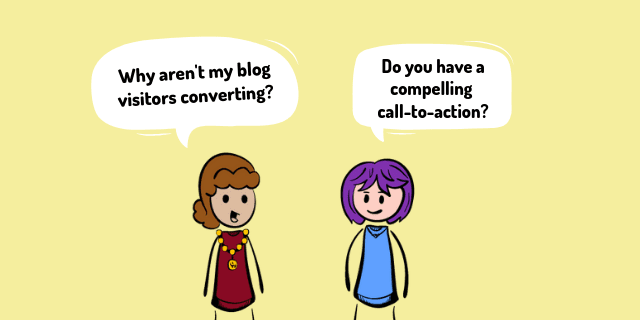
The majority of the people visiting your website might not necessarily know what to do next.
They don’t know what you want them to do.
They have just consumed the content and are wondering “what now”.
Most of them will likely leave the website after they have (or haven’t) got the value they were looking for.
But you don’t want them to leave. You want them to stick around longer for SEO and conversion purposes.
This is why providing them VERY clear (and personalized) Call-to-Action is very important.
Tell them what you want them to do. And then inform them what they will get in return if they perform that action.
Never leave your visitors, hanging, wondering “what now”.
59. Do (Necessary) Experiments Regularly
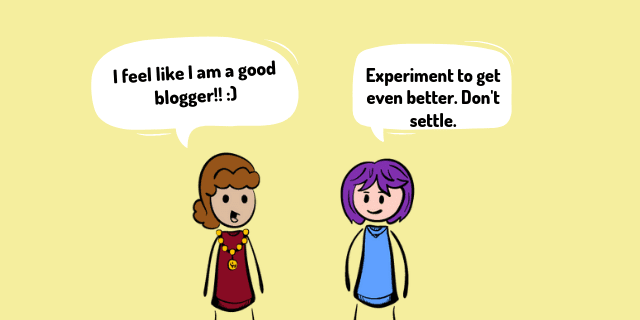
What if your blog design can be improved to deliver better UX?
What if a few changes on the landing page can improve your conversion?
Continuously experimenting with different aspects of your blog is essential for its growth.
Experiments in design, content, and campaigns on a regular basis are crucial so to find better ways to achieve more than what you’re getting at present.
Proper A/B testing can ensure such experiments do not hurt anything good that’s going on with your blog – at the same time helping you find better alternatives.
So, don’t settle for anything for a longer period. Keep trying new things. That’s the ONLY way to grow your blog.
60. Network With Other Bloggers And Influencers
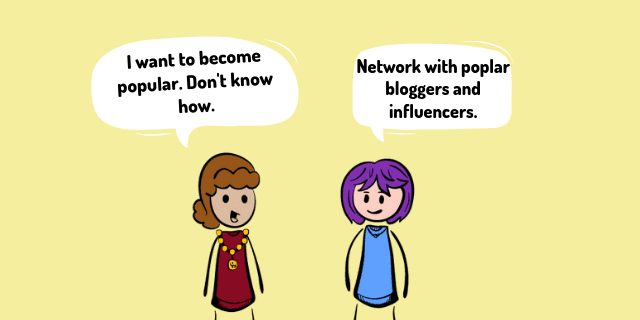
Not only chatting with other bloggers and influencers interesting but such interactions also open new doors to many opportunities…
Opportunities to collaborate, guest blog, exchange links, give shout-outs on social media.
So, through different platforms, reach out to renowned names in your (and other) industries.
Get involved in fun and meaningful conversations with them. Do this often. Down the line, they will end up remembering you.
And in the long run, in whatever way or form, this effort will return back with bigger rewards.
61. Get As Much Learning Exposure As You Can
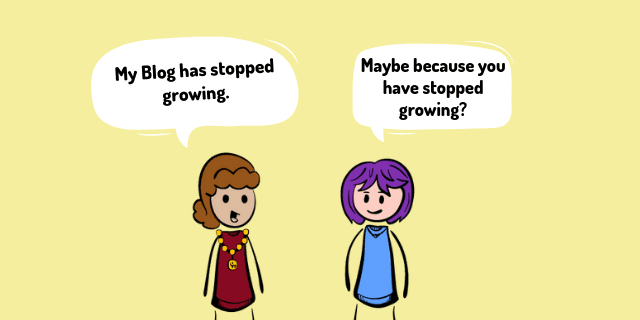
The growth of your blog would only be as big as your own growth.
A common mistake bloggers make is that they do not proactively work to grow themselves in their field.
Passively reading articles, watching videos when traveling – these help but they do not add substantial value to your intellect.
You’ve got to make measurable efforts in learning new things, analyzing the latest ideas and redefining your own thoughts.
This would require you to expose yourself to the right learning resources, industry leaders and consumer data.
You’ve got to get yourself deep in the game to understand it inside-out.
62. Grow Thick Skin
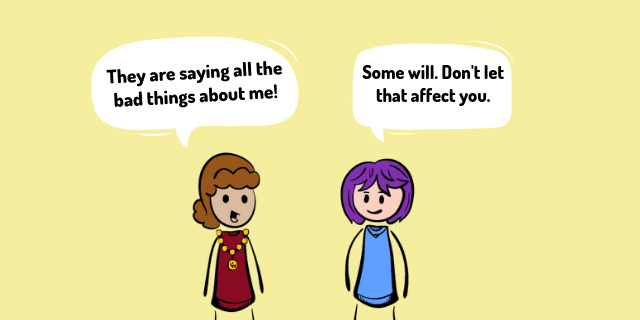
You won’t see the desired traffic. You will be rejected from affiliate programs. Your payments will get delayed.
There will be people on social media who will challenge (and even question) your intellect.
They will, out of their own insecurities, make fun of you.
At times, you will feel stuck.
All these require you to have a thick skin. You need to be emotionally strong to keep up with this rollercoaster of a ride.
If not, more often than not, you will end up feeling sad, drained and demotivated.
63. Know How To Keep Yourself Motivated
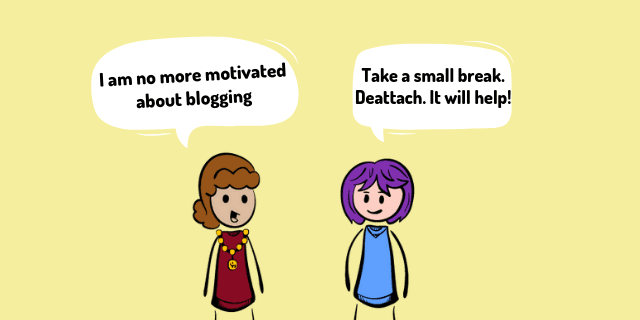
It’s easy to get disheartened when you don’t see the rewards that you were hoping for.
It’s easy to see less traffic and wonder if blogging was really the right choice for you.
It’s difficult to have patience when nothing is going right.
This is why keeping yourself motivated throughout the blogging journey is very important.
So, know when you’re feeling down, what you should do to get your motivation back.
- Get away from analytics?
- Look at other successful bloggers?
- See an email from a reader thanking you?
- Taking a (very) small break to refresh yourself?
It varies between individuals. Find what would give you the motivational kick and keep it handy for down-time.
64. Avoid The Tempt Of Launching Another Blog

Knowing what to do is important. Knowing what NOT to do is even more important.
And launching another blog is one of those things that you should NOT do for now.
As a blogger, you would have plenty of things to say, and too many ideas to execute. You will also find other successful bloggers who will influence you to take up new projects.
Refrain yourself.
When starting, putting all your focus and energy in one blog is the best strategy. First, grow this one and then spread your attention to other projects.
Else, you will be left half-pregnant with two (or more) blogs – none of them successful enough.
When you’re trying to do too many things at one time, you kill the speed of the process. Plus, you also will inevitably make mistakes.
What would you rather have: one successful blog in 2 years or two half-successful blogs in 5 years?
Grow, yes! But have a plan and strategy to grow. Be thoughtful.
65. Consistency Is Everything. EVERYTHING.
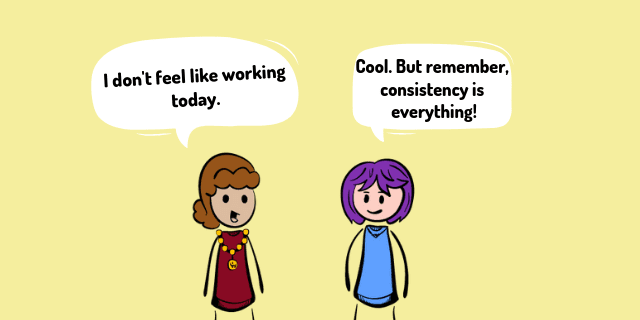
This couldn’t be stressed more.
Treat blogging as more than just your hobby or “pass time”. Treat it as a business. Take it more seriously.
No matter what, you will have to show up every single day. No excuses.
Publish articles on a regular basis. Post on social media every day. Send and respond to emails every day.
Stay in your ‘blogging groove’ all the time.
Remember…
Missing even one day can bring you so many steps backward. And you cannot afford this.
66. Don’t Give Up – Deploy (MASSIVE) Patience
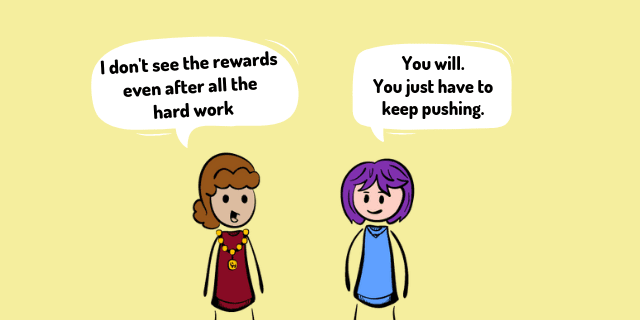
It won’t happen in a week.
Heck, there’s a good chance that it might not happen even in a year.
Becoming a successful blogger takes a lot of time.
It’s a process. FROM creating a content asset on your blog TO winning your audience’s attention (and trust) – these things take time.
So, patience is something you must have in an enormous amount.
Do not buy into the narrative that blogging is a ‘quick money’ scheme. STOP believing those fake income reports of different bloggers.
You need to work for years before your blog makes you a substantial income.
67. Build A Team And Grow Your Blog

Blogging isn’t necessarily a one-man thing.
Yes, when you’re starting, you would be crunched in the budget; you would want to do everything by yourself.
But now when you’re trying to grow your blog to the next stage, building a team would be important.
You can’t do it all by yourself.
So, find for yourself an editor, writer, web developer, virtual assistant, video editor/maker, audio editor, more.
Outsource these professionals per your needs and goals.
When working with the right people, you will find growing your blog would become so much easier, efficient and faster.
This, in turn, will increase your revenue, which will make up for the cost of outsourcing a team.
68. Evolve And Adapt To The Changing Market
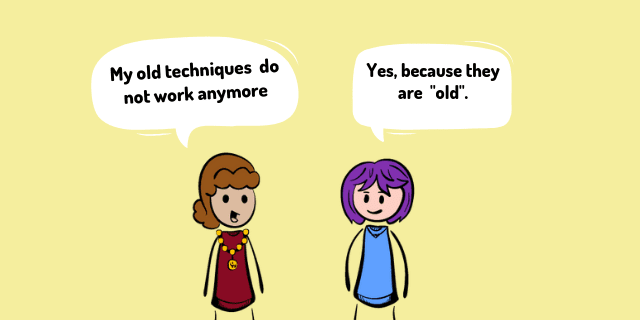
Blogging might not be as appealing of an option a few years from today. Things might change.
It’s no secret that so many people prefer videos over text. Hence the popularity of vlogs.
It’s inevitable that that voice will take over the web. 76.8 percent of people listen to podcasts for more than 7 hours a week already.
Such changes will hit select blogging niches more than the others.
To become and remain a successful blogger, it’s essential to progress along with these changes. You either adapt or perish.
So, keeping an eye out on this evolution and taking proactive measures to stay ahead in the game is essential.
Read the news. Look at the successful names in the game and see what they are doing. And then evaluate and refine your own approach accordingly.
Conclusion
There are many other small blogging tips for beginners and pros.
But do not worry about them. You will learn more as you grow and get hands-on exposure to the game.
For now, if you did read this long-ass post in entirety, I genuinely hope it brought you big value.
Let me know what was the biggest takeaway for you in this post. Tweet to me.
If you liked this post, please share it with your friends.
Recommended Read:
